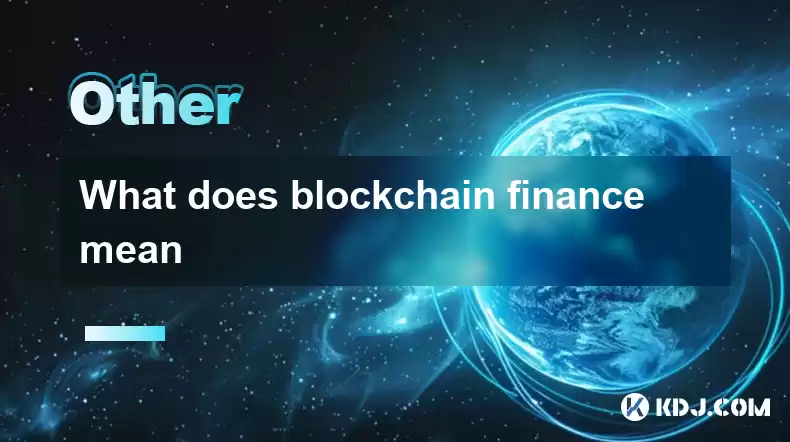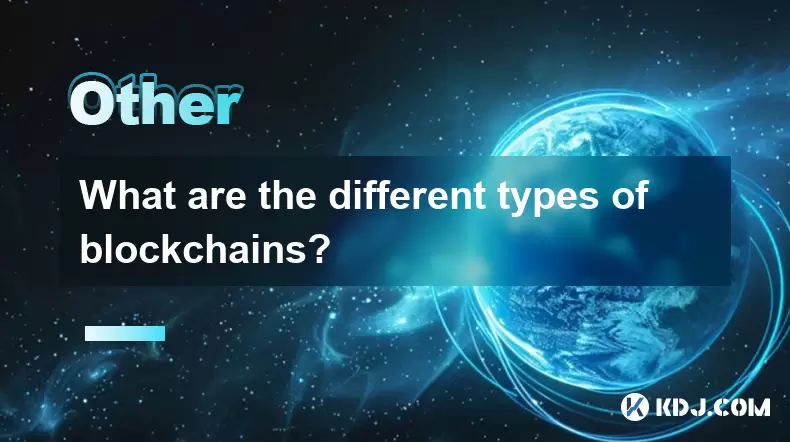-
 Bitcoin
Bitcoin $112400
-1.07% -
 Ethereum
Ethereum $3409
-3.27% -
 XRP
XRP $2.784
-6.60% -
 Tether USDt
Tether USDt $0.9997
-0.03% -
 BNB
BNB $739.3
-2.09% -
 Solana
Solana $158.0
-2.90% -
 USDC
USDC $0.9998
-0.02% -
 TRON
TRON $0.3213
-0.94% -
 Dogecoin
Dogecoin $0.1929
-5.01% -
 Cardano
Cardano $0.6974
-2.82% -
 Hyperliquid
Hyperliquid $36.69
-2.31% -
 Sui
Sui $3.327
-4.80% -
 Stellar
Stellar $0.3672
-5.18% -
 Chainlink
Chainlink $15.65
-3.07% -
 Bitcoin Cash
Bitcoin Cash $525.0
-1.68% -
 Hedera
Hedera $0.2291
-6.00% -
 Avalanche
Avalanche $20.91
-2.96% -
 Ethena USDe
Ethena USDe $1.000
0.00% -
 Toncoin
Toncoin $3.520
-1.12% -
 UNUS SED LEO
UNUS SED LEO $8.968
0.14% -
 Litecoin
Litecoin $105.7
0.26% -
 Shiba Inu
Shiba Inu $0.00001181
-1.79% -
 Polkadot
Polkadot $3.492
-2.08% -
 Uniswap
Uniswap $8.800
-3.10% -
 Dai
Dai $0.9999
-0.01% -
 Monero
Monero $289.9
-3.17% -
 Bitget Token
Bitget Token $4.243
-1.27% -
 Pepe
Pepe $0.00001006
-3.67% -
 Cronos
Cronos $0.1248
-5.68% -
 Aave
Aave $249.7
-2.50%
What does blockchain finance mean
Powered by blockchain technology, the future of finance promises increased security, transparency, and decentralized financial services that drive financial inclusion and foster empowerment worldwide.
Feb 04, 2025 at 02:00 am

Key Points:
- Understanding Blockchain Technology
- Blockchain in Finance: Applications and Benefits
- Security and Transparency in Blockchain Finance
- Decentralization and Financial Inclusion
- Blockchain Adoption by Financial Institutions
- Future of Blockchain Finance
- FAQs
What is Blockchain Technology?
Blockchain technology is a decentralized, distributed ledger system that records transactions securely and transparently. Each block in the chain contains a record of transactions, a timestamp, and a reference to the previous block. Once a block is added to the chain, it becomes immutable, ensuring the integrity of the transaction data.
Blockchain in Finance: Applications and Benefits
Blockchain technology has numerous applications in the financial industry, including:
- Payments and Settlements: Blockchain-based payment systems offer faster, cheaper, and more secure transactions. They eliminate intermediaries and reduce transaction costs.
- Trade Finance: Blockchain simplifies trade finance processes, reducing paperwork and automating tasks. It improves transparency, speeds up transactions, and minimizes fraud.
- Supply Chain Management: Blockchain provides a tamper-proof record of the movement of goods throughout the supply chain. It enhances visibility, efficiency, and accountability.
Security and Transparency in Blockchain Finance
Blockchain's decentralized nature and cryptographic algorithms ensure high levels of security:
- Decentralization: No single entity controls the blockchain, making it less susceptible to hacking or fraud.
- Cryptography: Cryptographic hashing and digital signatures protect transactions from unauthorized alteration.
- Transparency: All transactions on the blockchain are publicly visible, fostering transparency and accountability.
Decentralization and Financial Inclusion
Blockchain technology promotes decentralization by allowing anyone to participate in the network without intermediaries. This has significant benefits for financial inclusion:
- Access to Finance: Blockchain can provide financial services to underserved populations who lack access to traditional banking systems.
- Reduced Costs: Decentralized blockchain services eliminate the need for costly intermediaries, resulting in lower transaction fees and improved accessibility.
- Empowerment: By empowering individuals with control over their financial data, blockchain fosters financial literacy and independence.
Blockchain Adoption by Financial Institutions
Financial institutions are increasingly adopting blockchain technology to improve efficiency, reduce costs, and explore new business models:
- Banks: Blockchain-based systems for payments, settlements, and trade finance are being tested and implemented by major banks worldwide.
- Asset Managers: Blockchain is being used for tokenization of assets, simplifying investment processes and increasing access to alternative asset classes.
- FinTech Companies: Startups and established FinTech companies are leveraging blockchain to disrupt traditional financial services and create innovative solutions.
Future of Blockchain Finance
Blockchain technology continues to evolve and holds immense potential for the future of finance:
- Central Bank Digital Currencies (CBDCs): Central banks are exploring the issuance of CBDCs based on blockchain, potentially transforming payment systems and monetary policy.
- Smart Contracts: Blockchain smart contracts automate the execution of agreements, increasing efficiency, reducing costs, and enhancing transparency.
- Decentralized Autonomous Organizations (DAOs): DAOs leverage blockchain to create self-governed organizations that operate based on rules defined by the community.
FAQs:
- What are the advantages of blockchain in finance?
Blockchain offers enhanced security, transparency, decentralization, and financial inclusion compared to traditional finance systems. - How does blockchain improve financial transactions?
Blockchain-based transactions are faster, cheaper, and more secure due to the elimination of intermediaries and the use of cryptographic techniques. - How are financial institutions using blockchain technology?
Financial institutions are exploring blockchain for payments, settlements, asset management, and other applications to improve efficiency and create new services. - What are the challenges of adopting blockchain in finance?
Challenges include scalability, regulatory uncertainty, and the need for widespread adoption and interoperability among different blockchain systems. - What is the future of blockchain finance?
The future of blockchain finance holds potential for CBDCs, smart contracts, DAOs, and the transformation of financial services to promote financial inclusion and innovation.
Disclaimer:info@kdj.com
The information provided is not trading advice. kdj.com does not assume any responsibility for any investments made based on the information provided in this article. Cryptocurrencies are highly volatile and it is highly recommended that you invest with caution after thorough research!
If you believe that the content used on this website infringes your copyright, please contact us immediately (info@kdj.com) and we will delete it promptly.
- Ruvi AI: The AI Token on Cardano Set to Dominate After CMC Listing
- 2025-08-03 04:50:12
- Altcoins in the Spotlight: Cardano, Shiba Inu, and the Quest for Crypto Supremacy
- 2025-08-03 05:30:12
- Litecoin, USDC, and Mining in 2025: A New Yorker's Take
- 2025-08-03 05:50:12
- Bitcoin, MicroStrategy, and Institutional Confidence: A Bullish Trifecta?
- 2025-08-03 04:30:12
- Ruvi AI Token: Price Hike Imminent After Presale Milestone?
- 2025-08-03 04:30:12
- Ruvi AI: The Millionaire Maker with a Price Spike on the Horizon?
- 2025-08-03 02:50:12
Related knowledge

What is the difference between on-chain and off-chain transactions?
Aug 02,2025 at 04:22pm
Understanding On-Chain TransactionsOn-chain transactions refer to digital asset transfers that are recorded directly on a blockchain ledger. These tra...

What is the double-spending problem and how does blockchain prevent it?
Aug 02,2025 at 01:07pm
Understanding the Double-Spending ProblemThe double-spending problem is a fundamental challenge in digital currency systems where the same digital tok...

What is the difference between a blockchain and a database?
Aug 01,2025 at 09:36pm
Understanding the Core Structure of a BlockchainA blockchain is a decentralized digital ledger that records data in a series of immutable blocks linke...

How does blockchain handle scalability?
Aug 02,2025 at 02:58pm
Understanding Blockchain Scalability ChallengesBlockchain scalability refers to a network's ability to handle an increasing volume of transactions wit...

What are the different types of blockchains?
Aug 03,2025 at 03:01am
Public Blockchains: Open and Decentralized NetworksPublic blockchains are the most widely recognized type of blockchain, characterized by their open a...

What is a hash in a blockchain?
Aug 02,2025 at 05:28am
Understanding the Concept of Hash in BlockchainA hash in the context of blockchain technology refers to a unique digital fingerprint generated by a cr...

What is the difference between on-chain and off-chain transactions?
Aug 02,2025 at 04:22pm
Understanding On-Chain TransactionsOn-chain transactions refer to digital asset transfers that are recorded directly on a blockchain ledger. These tra...

What is the double-spending problem and how does blockchain prevent it?
Aug 02,2025 at 01:07pm
Understanding the Double-Spending ProblemThe double-spending problem is a fundamental challenge in digital currency systems where the same digital tok...

What is the difference between a blockchain and a database?
Aug 01,2025 at 09:36pm
Understanding the Core Structure of a BlockchainA blockchain is a decentralized digital ledger that records data in a series of immutable blocks linke...

How does blockchain handle scalability?
Aug 02,2025 at 02:58pm
Understanding Blockchain Scalability ChallengesBlockchain scalability refers to a network's ability to handle an increasing volume of transactions wit...

What are the different types of blockchains?
Aug 03,2025 at 03:01am
Public Blockchains: Open and Decentralized NetworksPublic blockchains are the most widely recognized type of blockchain, characterized by their open a...

What is a hash in a blockchain?
Aug 02,2025 at 05:28am
Understanding the Concept of Hash in BlockchainA hash in the context of blockchain technology refers to a unique digital fingerprint generated by a cr...
See all articles

























































































